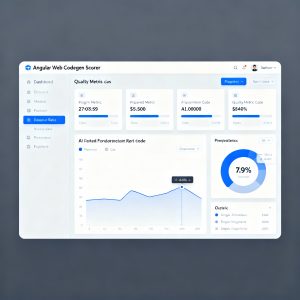As the demand for full-stack developers continues to rise, the MERN Stack—comprising MongoDB, Express.js, React, and Node.js—has become a leading choice for modern web development. Companies seek professionals proficient in these technologies, making thorough interview preparation essential for aspiring developers. The following guide presents a curated collection of 30 frequently asked MERN Stack developer interview questions, organized by experience level, with detailed explanations and practical examples.
What is the MERN Stack and Why is it Popular?
The MERN Stack is a powerful combination of four core technologies: MongoDB, Express.js, React, and Node.js. Each plays a distinct role in building robust web applications. MongoDB serves as the database, Express.js acts as the backend framework, React powers the frontend interface, and Node.js provides the runtime environment for server-side JavaScript.
This stack is widely favored for its end-to-end JavaScript usage, enabling seamless data flow between the client and server. Developers appreciate the unified language, which streamlines both development and collaboration, making the MERN Stack ideal for dynamic, single-page applications and real-time features.
MERN Stack Developer Interview Questions by Level
Fresher Level Questions
- What is the MERN Stack and why is it popular?
- The MERN Stack integrates MongoDB, Express.js, React, and Node.js. Its popularity stems from a consistent JavaScript environment across the stack, which accelerates development and simplifies maintenance.
- What is the role of MongoDB in the MERN Stack?
- MongoDB is a NoSQL database that stores data in flexible, JSON-like documents. This schema-less approach allows for rapid iteration and easy adaptation to evolving application requirements.
- What is the difference between SQL and NoSQL databases?
- SQL databases use structured tables and predefined schemas, making them suitable for applications with fixed data structures. NoSQL databases, like MongoDB, support dynamic schemas and are ideal for unstructured or semi-structured data.
- What is Express.js and how does it work?
- Express.js is a lightweight web application framework for Node.js. It simplifies server-side logic with robust routing, middleware support, and efficient RESTful API creation.
- How do you write a basic “Hello World” Express.js server?
javascript
const express = require('express');
const app = express();
app.get('/', (req, res) => {
res.send('Hello World!');
});
app.listen(3000, () => {
console.log('Server is running on port 3000');
});This code initializes a server that listens on port 3000 and responds with “Hello World!” to incoming requests.
- What is React and how is it different from other frameworks?
- React is a JavaScript library focused on building user interfaces. Unlike frameworks such as Angular, React specializes in the view layer, utilizes a virtual DOM for performance, and promotes reusable components.
- What is Node.js and why is it used in the MERN Stack?
- Node.js is a server-side JavaScript runtime. It enables non-blocking, event-driven architecture, supports a unified codebase, and provides access to a rich ecosystem of libraries via npm.
- How do you create a React component?
- React components can be created as functional or class components. Functional components are preferred for their simplicity and compatibility with React hooks.
- What is JSX in React?
- JSX is a syntax extension that allows developers to write HTML-like code within JavaScript, making UI development more intuitive and efficient.
- What is npm and why is it important in MERN Stack development?
- npm (Node Package Manager) is essential for installing, managing, and updating project dependencies, as well as running scripts for testing and deployment.
Intermediate Level Questions
- How does the MERN Stack handle routing?
- On the frontend, React Router manages client-side navigation. On the backend, Express.js defines routes to handle HTTP requests and serve API responses.
- What is the difference between state and props in React?
- State is mutable data managed within a component, while props are immutable data passed from parent to child components.
- How do you connect a Node.js backend to a MongoDB database?
- Use Mongoose, an ODM library, to establish a connection and interact with MongoDB.
- What is middleware in Express.js?
- Middleware functions process requests and responses in Express.js, enabling tasks such as authentication, logging, and data parsing.
- How do you create a REST API with Express.js?
- Define endpoints for HTTP methods (GET, POST, etc.) to handle CRUD operations and return JSON responses.
- What are hooks in React?
- Hooks allow functional components to manage state and side effects, replacing the need for class components in many scenarios.
- How does React handle forms?
- React uses controlled components, where form data is managed by state, ensuring real-time updates and validation.
- What is CORS and why do you need it in the MERN Stack?
- CORS (Cross-Origin Resource Sharing) is a security feature that permits or restricts cross-origin requests. It is essential when the frontend and backend run on different domains or ports.
- How do you implement authentication in the MERN Stack?
- Authentication is typically achieved using JSON Web Tokens (JWT). The backend generates and verifies tokens, while the frontend stores and includes them in requests.
- Explain the concept of virtual DOM in React.
- The virtual DOM is a lightweight copy of the real DOM. React updates the virtual DOM first, then efficiently applies changes to the actual DOM, improving performance.
Advanced Level Questions
- How do you optimize React applications for performance?
- Use memoization, lazy loading, and careful state management to minimize unnecessary re-renders and improve load times.
- How do you deploy a MERN Stack application?
- Host the frontend on platforms like Netlify or Vercel, the backend on services like Heroku or AWS, and the database on MongoDB Atlas. Configure environment variables for security.
- What are higher-order components (HOCs) in React?
- HOCs are functions that take a component and return an enhanced component, enabling logic reuse across multiple components.
- How does MongoDB handle schema design for large-scale applications?
- MongoDB supports embedded documents for quick reads and references for flexible relationships. Sharding distributes data across servers for scalability.
- Write an example of a schema in Mongoose.
javascript
const userSchema = new mongoose.Schema({
name: { type: String, required: true },
email: { type: String, required: true, unique: true },
password: { type: String, required: true },
createdAt: { type: Date, default: Date.now }
});This schema defines a user model with essential fields and timestamps.
- What is Redux and when would you use it?
- Redux is a state management library for managing global state in complex applications, especially when multiple components require access to shared data.
- How do you handle errors in Express.js applications?
- Implement error-handling middleware to capture and respond to errors globally.
- What are WebSockets and how do you use them with Node.js?
- WebSockets enable real-time, bidirectional communication. Use libraries like socket.io for implementation.
- How do you integrate third-party APIs in a MERN application?
- Use axios or fetch to make HTTP requests, including authentication tokens in headers when necessary.
- How would you handle scaling for a MERN Stack application?
- Scale the database with sharding, the backend with load balancing and clustering, and the frontend with CDNs for asset delivery.
Conclusion
Mastering the MERN Stack requires a solid understanding of its core technologies and best practices. By reviewing these 30 interview questions and answers, aspiring developers can build confidence, deepen their knowledge, and position themselves as strong candidates in the competitive tech job market. Whether targeting entry-level or advanced roles, this guide serves as a comprehensive resource for MERN Stack interview preparation.
Read more such articles from our Newsletter here.



